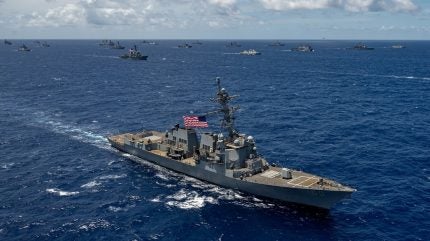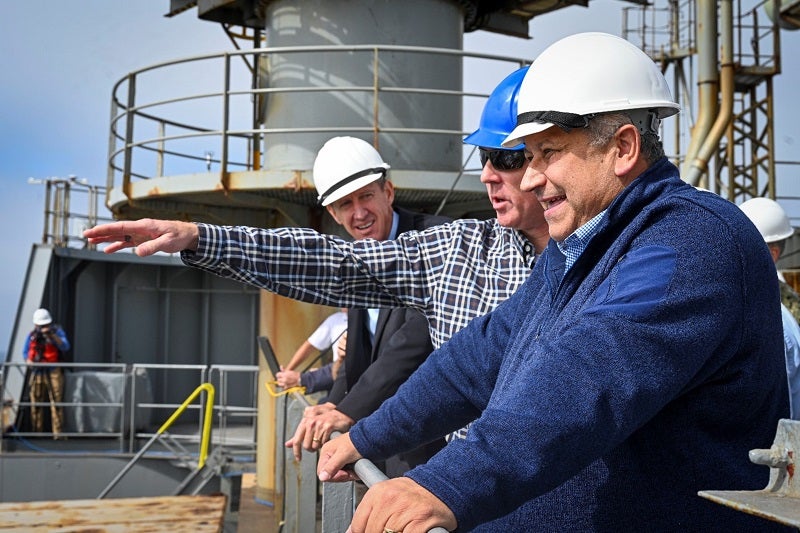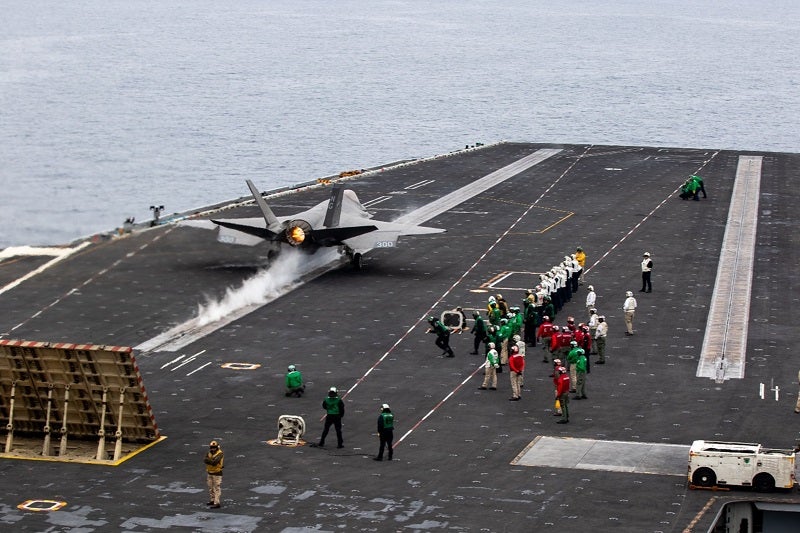
The US Department of the Navy confirmed that a new Naval Strategic Studies Group (NSSG) programme will be formed in the New Year of 2025.
Focusing on broad strategic challenges, rather than narrower problems already addressed by fleet experimentation on specific tactics or technologies, will help to strengthen US maritime dominance.
NSSG will be modelled on a similar group created in 1981 during the Cold War, which had a twofold mission to train future flag officers in strategic thinking and to conduct research on some of the department’s vexing strategic challenges.
Similarly, NSSG participants will conduct a research project that advances the Maritime Statecraft vision put forward last year by the Navy Secretary, Carlos Del Toro. This doctrine advocates for a whole-of-government approach to prop up US naval and commercial power on the world stage as this is inextricably tied to diplomatic authority.
The first cohort will include uniformed and civilian members from the Navy and Marine Corps.
“I expect my seasoned, mid-grade officers to be brilliant on naval tactics and operations by the time they report for graduate education,” Del Toro envisioned.
“I need future flag and general officers who will think strategically about how to lead naval forces in an increasingly contested maritime domain and amidst intense economic, technological and military competition.”

Strategic challenges today
The US and its allies will confront another period of strategic competition in the coming years as certain countries – namely China, Russia, Iran and North Korea – seek to upend global security.
“Today we face a comprehensive maritime power in the Indo-Pacific, Russian aggression in Ukraine, and Houthi attacks in the Red Sea – all of which will shape our security environment for several decades,” Del Toro noted. “A revitalised, Naval SSG will help the Department of the Navy engage with and look ahead of these trends with sufficient access, resources, and guidance from leadership.”
The nature of conflict is changing as dual-use technologies are appropriated for war, space and cyber offer a new dimension to how forces can fight, and a new significance placed on non-state actors. None of this “fits neatly into old frameworks,” remarked Lieutenant General Benjamin Watson, who leads the Marine Corps Training and Education Command.
“To stay ahead of our adversaries, we need to keep evolving—updating our training, sharpening our minds, and learning – not just observing – the lessons of contemporary conflict.”
Current strategic measures
At present, the US is increasingly prioritising China as the country’s foremost strategic threat in the coming years. The Navy will be integral to fighting across the Indian and Pacific Oceans.
Such a sparse conflict will be characterised by the endless exchange of missiles and firepower from land, sea and air. The US Armed Forces will need to be agile and proactive in how they operate.
The Department of Defense will doubtless build on the ‘island-hopping’ strategy employed in the Pacific theatre during the Second World War. As part of this approach, the government needs to modernise aircraft; renovate logistical infrastructure; expand shipbuilding; and cultivate strategic partnerships in the region.
Of course, work is already underway. In July, the government agreed to modernise tactical aircraft residing in key locations across Japan in a programme valued up to $10bn.
Likewise, the US Air Force is implementing a strategy wherein its planes will scatter to survive. Through its policy of Agile Combat Employment (ACE), the forces will spread its units out across various island territories.
“ACE complicates the enemy’s targeting process, creates political and operational dilemmas for the enemy, and creates flexibility for friendly forces,” the service explained in Air Force Doctrine Note 1-21.

However, one issue that the US Government Accountability Office found is that the Armed Forces are unable to keep their fighters mission-capable. Some $57bn has been spent across the the Navy and Air Force to sustain the fleets.
Meanwhile, long-forgotten airfields and logistic hubs from the war, which are now encroached by jungle foliage, are being unearthed and developed on Pacific atolls. Tinian, the island from which two US B-29s took off to drop the atomic bombs on Hiroshima and Nagasaki, is just one of the many logistically significant islands to be developed, according to a report from the Wall Street Journal.
Shipbuilding remains an enduring problem for the Navy. More ships are needed as the service faces “contested logistics” noted Mark Cancian, senior fellow, Center for Strategic and International Studies.
“They’re going to have to escort ships across the oceans and that’s going to take a lot of ships. It would be nice to have three or four DDG 51s [destroyers] in a convoy, but that’s just not gonna happen, that’s just not enough,” he told Naval Technology.
Investing in more smaller ships from frigates, corvettes and autonomous vessels with guided-missile capabilities is certainly the way to go. That may be the thinking behind such programmes as the Constellation frigate. Albeit, this has grown far larger and more costly than originally intended.



